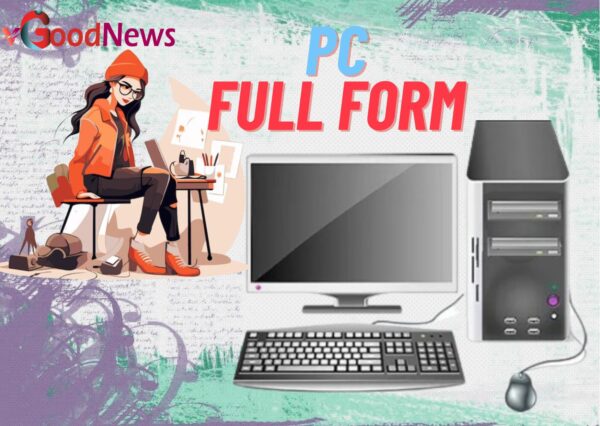PC Full Form: What is a PC?
PC Full Form: A Personal Computer (PC) is a small, typically affordable electronic device designed for a wide range of uses, including word processing, gaming, and internet browsing. The term “personal computer” was first coined by Digital Equipment Corporation to differentiate its personal computers from larger systems like minicomputers and mainframes.
PC Full Form: Importance of PCs
PCs are incredibly important in our daily lives and for the future. They offer versatility and power for both personal and professional tasks. As a frequent user, you likely recognize their critical role in modern society. PC Full Form
Definition and Types of PCs
A personal computer is a versatile, cost-effective device meant for individual use. Over the past decade, PCs have become more affordable, making them a popular choice among users. With their widespread availability and competitive pricing, the market has become highly competitive.
Tower form factor PCs are common, providing expandability and customization options. These end-user computers allow individuals to run a variety of programs and perform repetitive tasks across different industries. General-purpose computers have been widely used for many years due to their comprehensive set of components required by end-users. PC Full Form
Understanding PC Full Form
PC Full Form refers to the amount of working memory a PC has. Many people mistakenly believe it only pertains to the physical hard drives. However, a standard PC with a 2TB hard drive is more capable than most realize because of its working memory. The working memory is the actual memory available for running programs, which changes with every new application or file opened on your PC. PC Full Form
Why Know About PC Full Form?
Each PC has a unique name and model code based on its components, which manufacturers use to identify their products accurately. Understanding the PC Full Form is crucial for maintaining proper system identification and ensuring compatibility of various components. For example, a processor will not be stored with memory components or peripheral features, ensuring the correct identification of each part on the motherboard. PC Full Form
PC Full Form: Advantages of PCs
PCs offer numerous advantages over other devices: PC Full Form
- Built-in Features: Many PCs come with built-in speakers, microphones, and modulators for sound and visual signals.
- Convenience: They are easy to install and do not require additional cooling systems.
- Multitasking: PCs have enough processing power to handle multiple tasks simultaneously.
Disadvantages of PCs
However, PCs also come with some disadvantages: PC Full Form
- Power Consumption: PCs can consume a significant amount of power.
- Heat Generation: They may produce excessive heat, requiring proper ventilation.
- Hardware Failures: Hard disk drive failures can be a concern.
Conclusion
Understanding the PC Full Form and its components is essential for deciding whether you need a PC. A PC’s full form includes the sum of its physical and functional characteristics. PCs offer great benefits but also come with some drawbacks. By knowing the full extent of your PC’s capabilities and limitations, you can make informed decisions about its use and maintenance.
In summary, owning a PC is highly beneficial for personal and professional tasks. It allows you to connect to the internet, conduct multimedia downloads, and customize your user experience. Understanding the PC Full Form and its components is crucial for optimizing its performance and ensuring it meets your needs.

